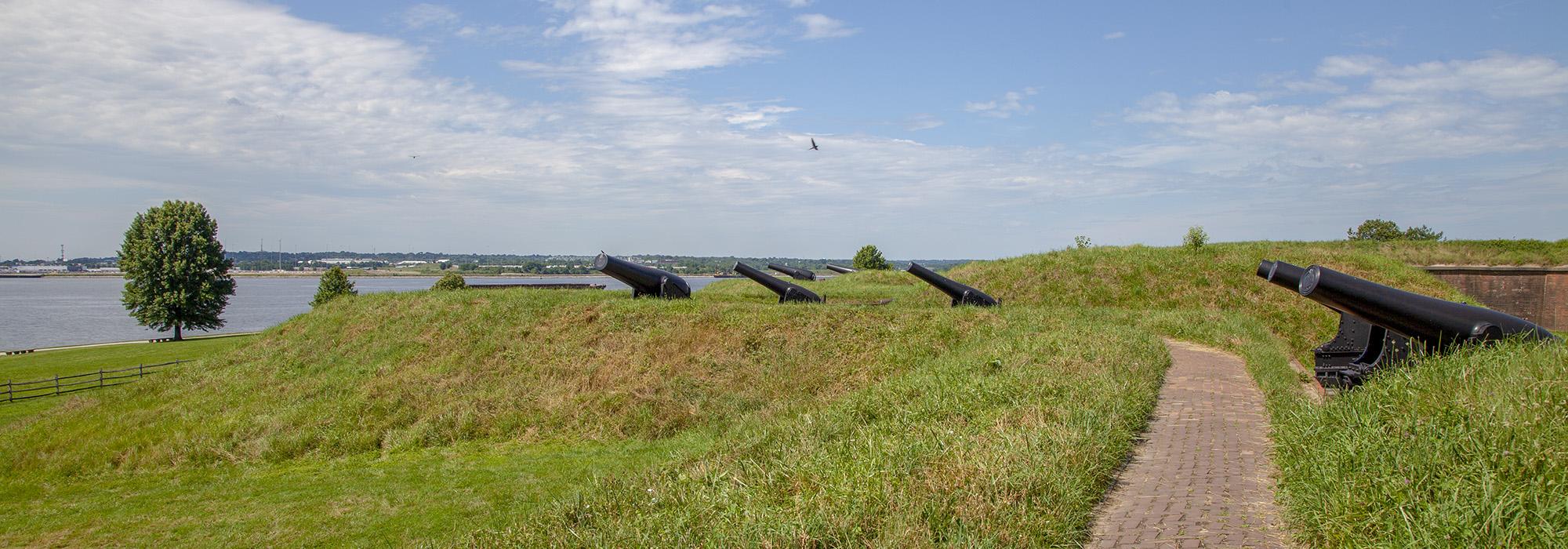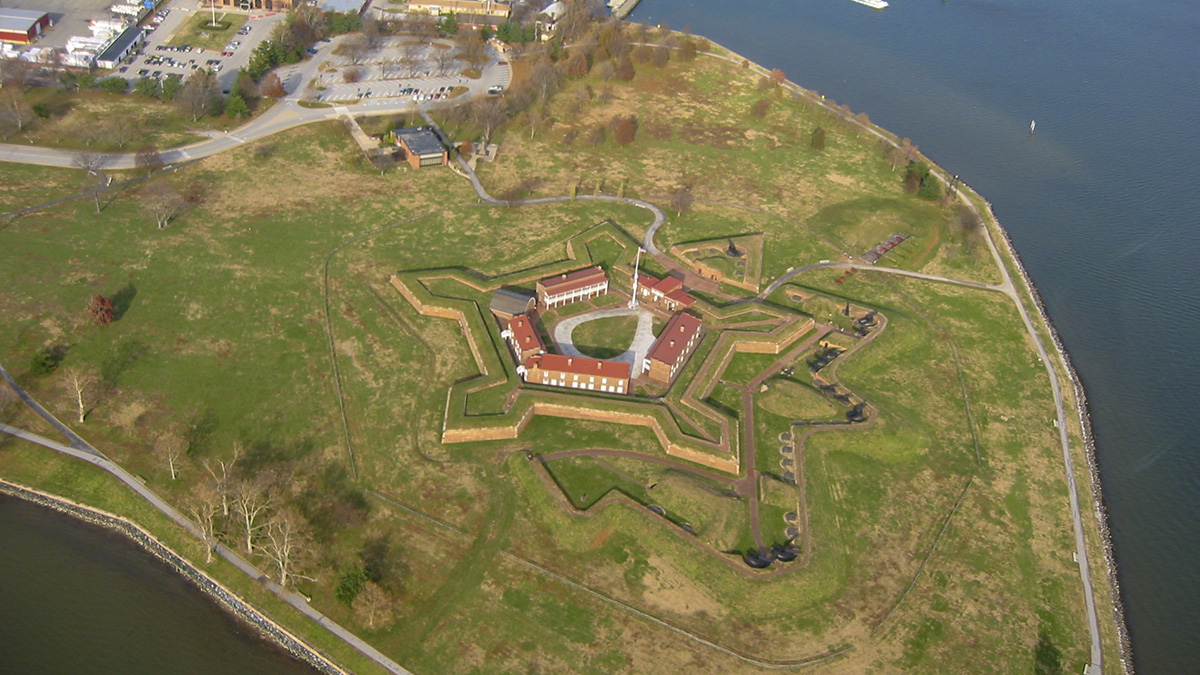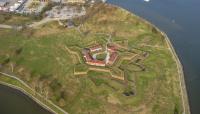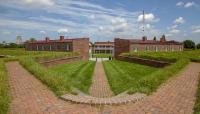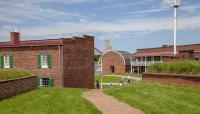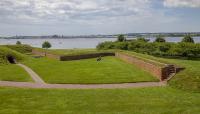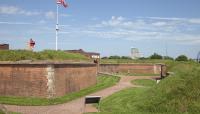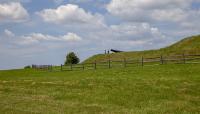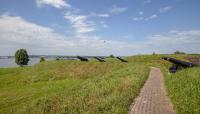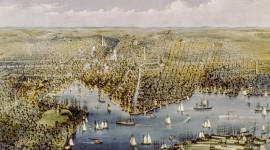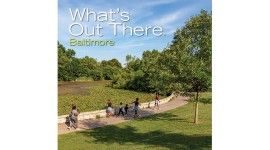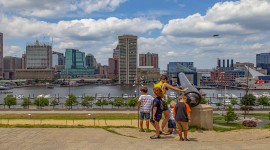Landscape Information
This National Park Service-managed coastal fortification, designed by French civil engineer Jean Foncin, is famous for surviving an overnight bombardment by the British navy in September 1814, which inspired Francis Scott Key to write the poem that later became the U.S. national anthem. Completed in 1803, it occupies the eastern tip of the peninsula formed by the Patapsco River, previously the site of the Revolutionary War-era Fort Whetstone, and features earthen and brick ramparts in the form of a pentagon with a bastion at each of its five points. The battlements enclose a parade ground, barracks, a guardhouse, and an ammunition magazine. A V-shaped ravelin, added in 1813, extends from the fort’s primary entrance and points northeast. An outer array of breast-height earthen walls, added in 1836, wraps from the ravelin to the southwestern point of the fortification. Along with protecting Baltimore and its harbor, the fort was a military prison during the Civil War, public park in the early twentieth century, hospital during World War I, and Coast Guard training center during World War II.
The overall spatial organization of the nineteenth-century outpost and its secondary structures remains intact. The fort’s sodded earthworks drop into mostly open lawn, which slopes slightly downward as it extends to the seawall; canopy trees with limited understory grow in clusters at the water’s edge of the 43-acre site. Statues of George Armistead (the fort’s commander during the 1814 battle) and the Greek figure Orpheus stand apart from the fort, the latter referencing the site’s role as inspiration for Francis Scott Key. Curvilinear pedestrian paths traverse the landscape and provide access to the visitor center, fort, and grounds along the seawall. Fort McHenry, a national monument and historic shrine since 1939, was listed in the National Register of Historic Places in 1966 (the first year such designations were made).



